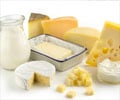In Alzheimer's, metabolic decline in the brain can lead to the deterioration of synaptic connections, impacting cognitive function.

Mitochondrial hypermetabolism precedes impaired autophagy and synaptic disorganization in App knock-in Alzheimer mouse models
Go to source). Alzheimer’s disease is the most common form of dementia and strikes about 20,000 people in Sweden every year. Researchers now show that a metabolic increase in the mitochondria, the cellular power plants, is an early indicator of the disease.
‘In Alzheimer's disease, the metabolic boost observed in young mice was accompanied by alterations in synaptic function, which were induced by disturbances in autophagy. #alzheimersdisease’





The teams behind the study used mice that developed Alzheimer’s disease pathology in a similar way to humans. The increase in metabolism in young mice was followed by synaptic changes caused by disruption to the cellular recycling system (a process known as autophagy), a finding that was awarded the Nobel Prize in Physiology or Medicine in 2016. Metabolic Decline and Synaptic Degradation in Alzheimer's Brain
After a time, metabolism in the Alzheimer brain usually declines, which contributes to the degradation of synapses. This the researchers could also see in the older mice, which had had the disease for longer time.“The disease starts to develop 20 years before the onset of symptoms, so it’s important to detect it early – especially given the retardant medicines that are starting to arrive,” says Per Nilsson, associate professor at the Department of Neurobiology, Care Sciences and Society, Karolinska Institutet. “Metabolic changes can be a diagnostic factor in this.”
Maria Ankarcrona, professor at the same department continues:
“Interestingly, changes in metabolism can be seen before any of the characteristic insoluble plaques have accumulated in the brain. The different energy balance tallies with what we’ve seen in images of the Alzheimer brain, but we’ve now detected these changes at an earlier stage.”
The study was conducted in close partnership between both researchers’ groups, who analysed the part of the mouse brain called the hippocampus, a structure that plays an important part in short-term memory and that is affected early in the pathological process.
Advertisement
The researchers studied the changes that then appeared in the synapses between the brain’s neurons using electron microscopy and other techniques, and found that vesicles called autophagosomes, whereby spent proteins are broken down and their components metabolized, had accumulated in the synapses, disrupting access to functioning proteins.
Advertisement
“These findings highlight the importance of retaining functional mitochondria and normal protein metabolism,” says Dr. Nilsson. “Going forward, we’ll be able to do tests on mice to see if new molecules that stabilize mitochondrial and autophagic function can retard the disease.”
The study was financed by grants from the Swedish Research Council, the Swedish Alzheimer’s Foundation and the Swedish Brain Fund and through private donations. The researchers have declared no conflicts of interest.
Reference:
- Mitochondrial hypermetabolism precedes impaired autophagy and synaptic disorganization in App knock-in Alzheimer mouse models - (https://www.nature.com/articles/s41380-023-02289-4)
Source-Eurekalert













